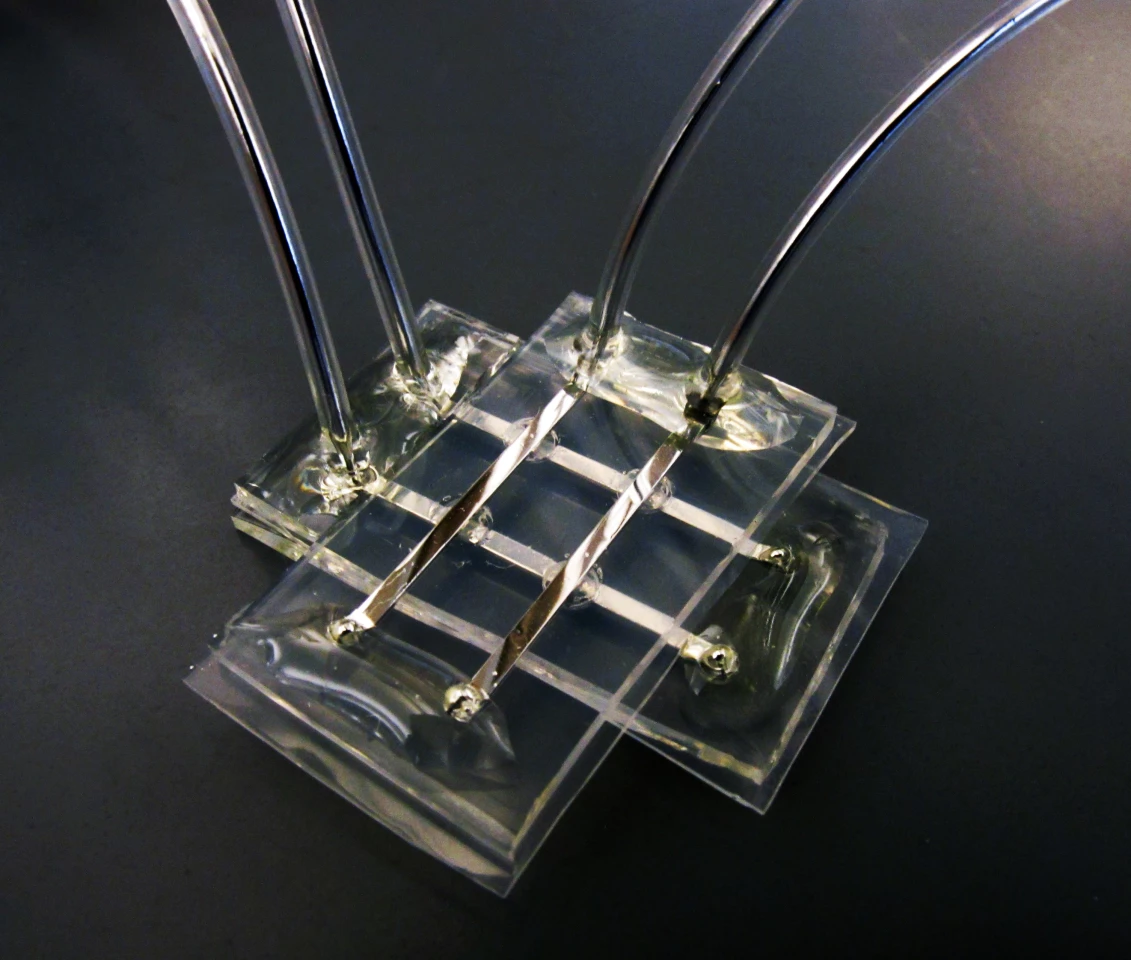Usually, the last things that most people want to do with a digital memory device are to drop it on a hard surface, bend it, or put it underwater. A new prototype developed by researchers at North Carolina State University, however, is made to stand up to all of those things and more. Instead of the brittle, unyielding materials that are at the heart of most electronics, the NCSU memory device is soft and squishy, and is not affected by wet environments ... "similar to the human brain," according to one of its designers.
The Jell-O-like device is composed of four crossed metal strips, made from a liquid alloy of gallium and indium, set on either side of slabs of water-based gel. Because of the biocompatibility of the gel, it would likely be ideal for implantation, where it could allow electronics to interface with biological systems.
As is the case with memristors, each component of the device is capable of existing in an electrically conductive or resistive state. These two states represent the 1s and 0s of the binary language, and are switched between via the manipulation of ions - in conventional electronics, electrons are used to achieve the same ends.

Within each circuit of the device, the alloy strips act as the electrode, located on either side of the conductive gel. When exposed to a positive charge, the alloy creates an oxidized skin that makes it resistive to electricity. When exposed to a negative charge, that skin vanishes, and it becomes conductive.
Ordinarily, if one side of the electrode was subjected to a negative charge, the existing positive charge would simply move to the other side, creating another skin and keeping the electrode in a resistive state. To keep this from happening, one side of the gel was doped with a polymer, that prevents the formation of the skin.
Currently, the NCSU device has little in the way of memory. In a higher-capacity form, however, it could conceivably be used not only in implants, but also in soft-bodied robots, or applications that are too rough for conventional electronics.
The research was recently published in the journal Advanced Materials.





